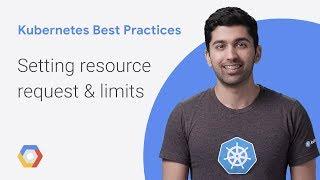
Setting Resource Requests and Limits in Kubernetes
Комментарии:

This is just what I was studying last night! Awesome!
Ответить
Keep up the good work 👍
Ответить
great video. not sure though why the human appearance is necessary
Ответить
is request and limit confined to containers or pods? because if i specify request and limit values to pod where pod have multiple containers then in that case will all the containers get adequate amount of resource?
Ответить
too bad you can't throttle memory with swap 🤔
Ответить
Nice video but one thing is not so clear: How to check the resources the pods are actually using?
Lets say I have a cluster running and have assigned some resources and limits. How can I check if those values are good for my application?
kubectl top and describe give very little information that is hard to relate. Is there a good resource about this?

Thanks! In my case I had to use Mi as unity instead of Mib.
Ответить
Thanks!!
Ответить
You say the values for each container are additive. Does this mean that if I have three pods, best practice should mean that the limt of 1 needs to be split between the three pods. i.e. I currently have limit 0.5 for main pod and 0.25 for the other two. Then the same for the requests. I have 0.6 for the the main pod and 0.2 for the other two.
Ответить
Sandeep, I believe having development and production seperated by namespaces is not a good practice. The development load will affect production load. What do you think about it?
Ответить
Hello! This's a very clear video about resources. Thank you very much. Keep going.
Ответить
what about GPU though?
Ответить
What about swap RAM ?
Ответить
My application needs SwAp Memory
Ответить
Well presented, and exactly what I was looking for Thank you!
Ответить
Can you tell us what is hard limit in quota
Ответить
thank you for such a great video. you're amazing <3
Ответить
throttling and the area between over-requested but below a hard limit is still unclear on what kubernetes really does
Ответить
so touching for an excellent video
Ответить
thanks, short and clear
Ответить
Very well presented information! Why couldn't the Kubernetes documentation just say "milli-cores" explicitly, I had to dig around to find that.
Ответить
if I'm using GKE, where do I go to evaluate how much a resource should request or be limited by?
Ответить
Great presentation!
Ответить
Very well explained!
Ответить
Thanks Sandeep, perfect presentation!
Ответить
Is there any way to restrict some core shall not be used by Kubernetes on host machines. For example Server-1 having core 0-31 where I wanted to keep 1,2,3,4 CPU as isolated and core 1,2,3,4 shall not be used by K8s. any configuration for this goal ?
Ответить
What about GPU resources? These are often more scarce than CPU memory of CPU cylces.
Ответить
Here, is memory component similar to RAM only right?
Ответить
simple and to the point :)
Ответить




![[IBM] Minecraft Mod Review - Tv mod [IBM] Minecraft Mod Review - Tv mod](https://smotrel.cc/img/upload/NHZDSkNkckJDTnE.jpg)





